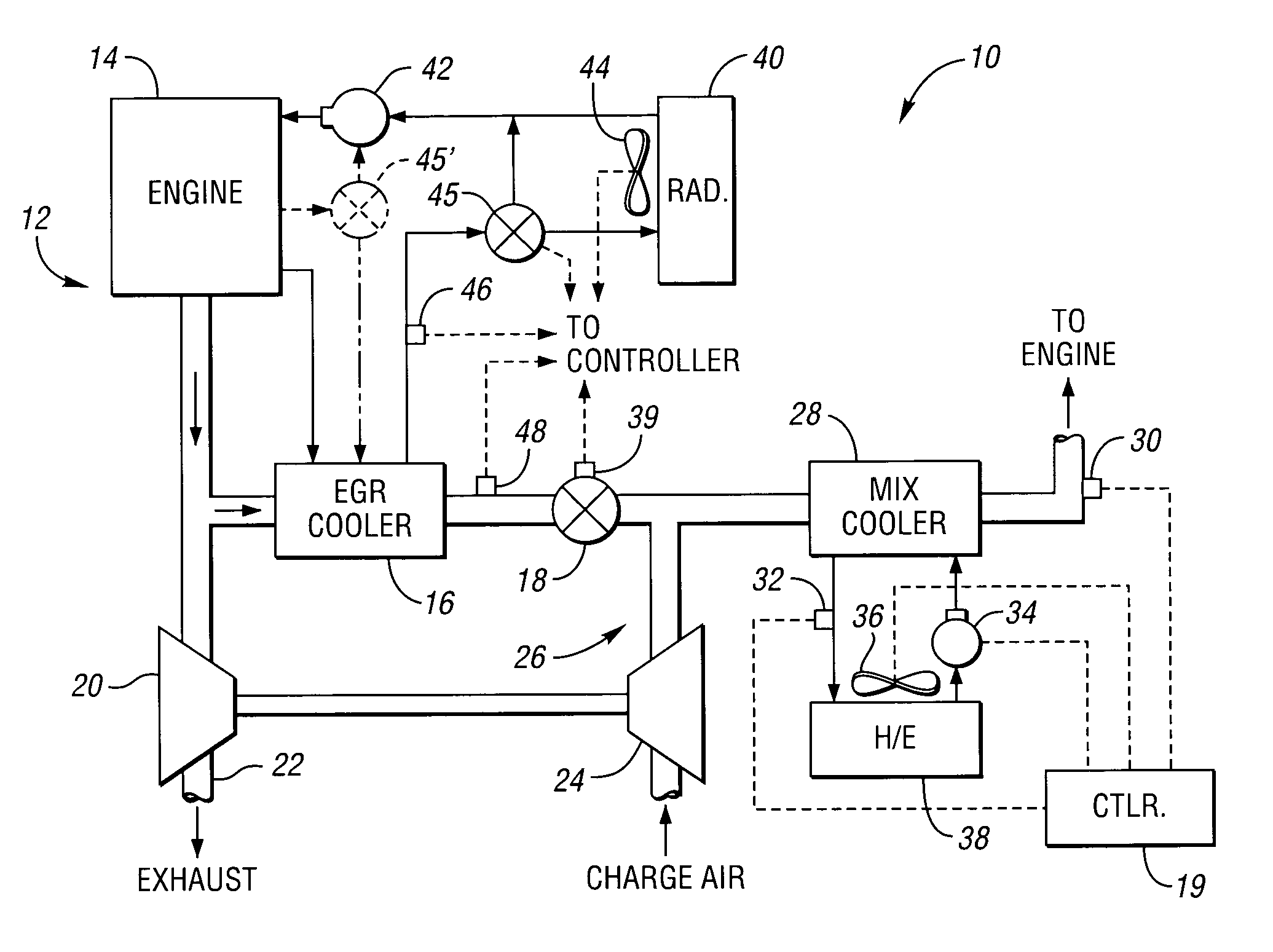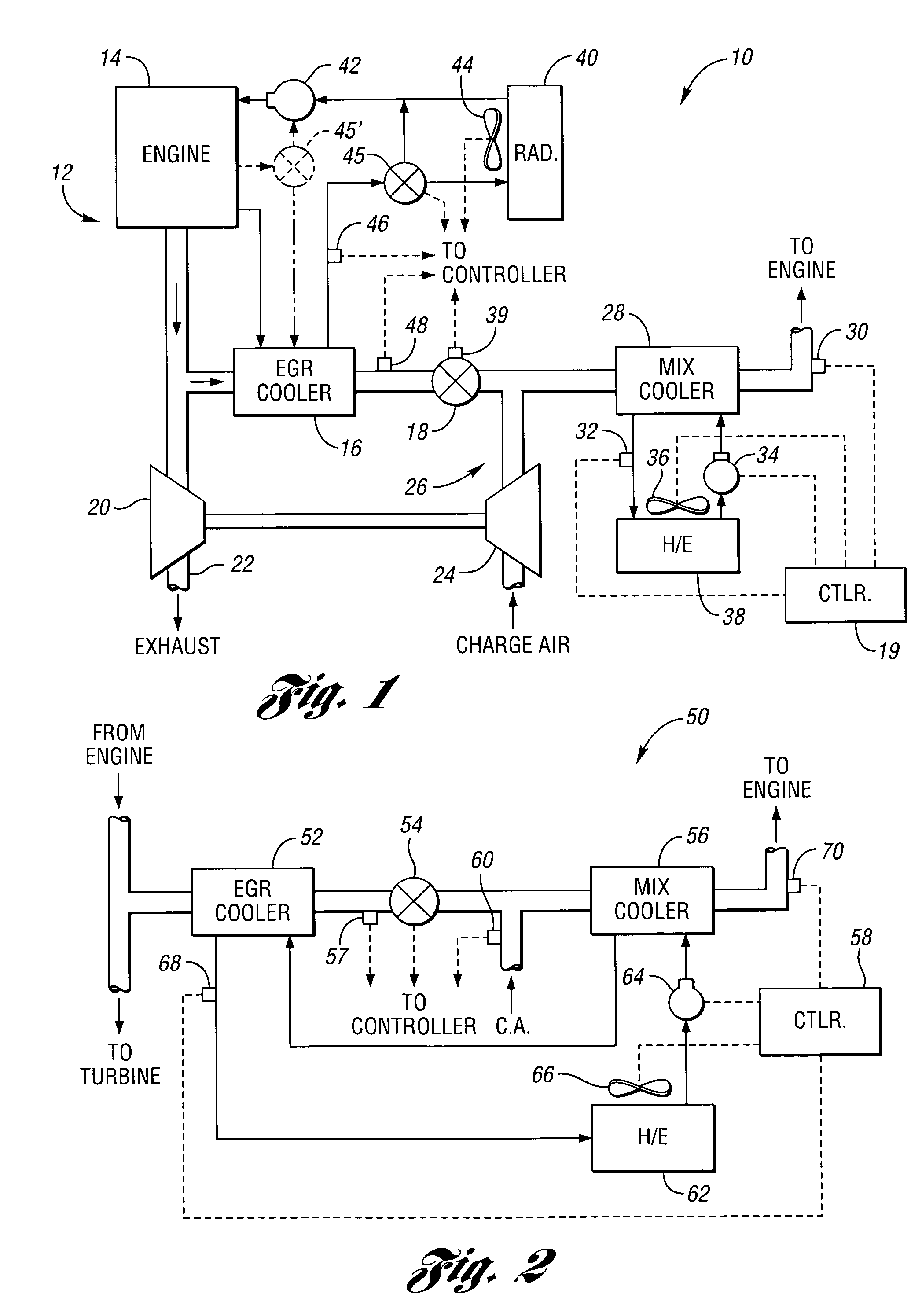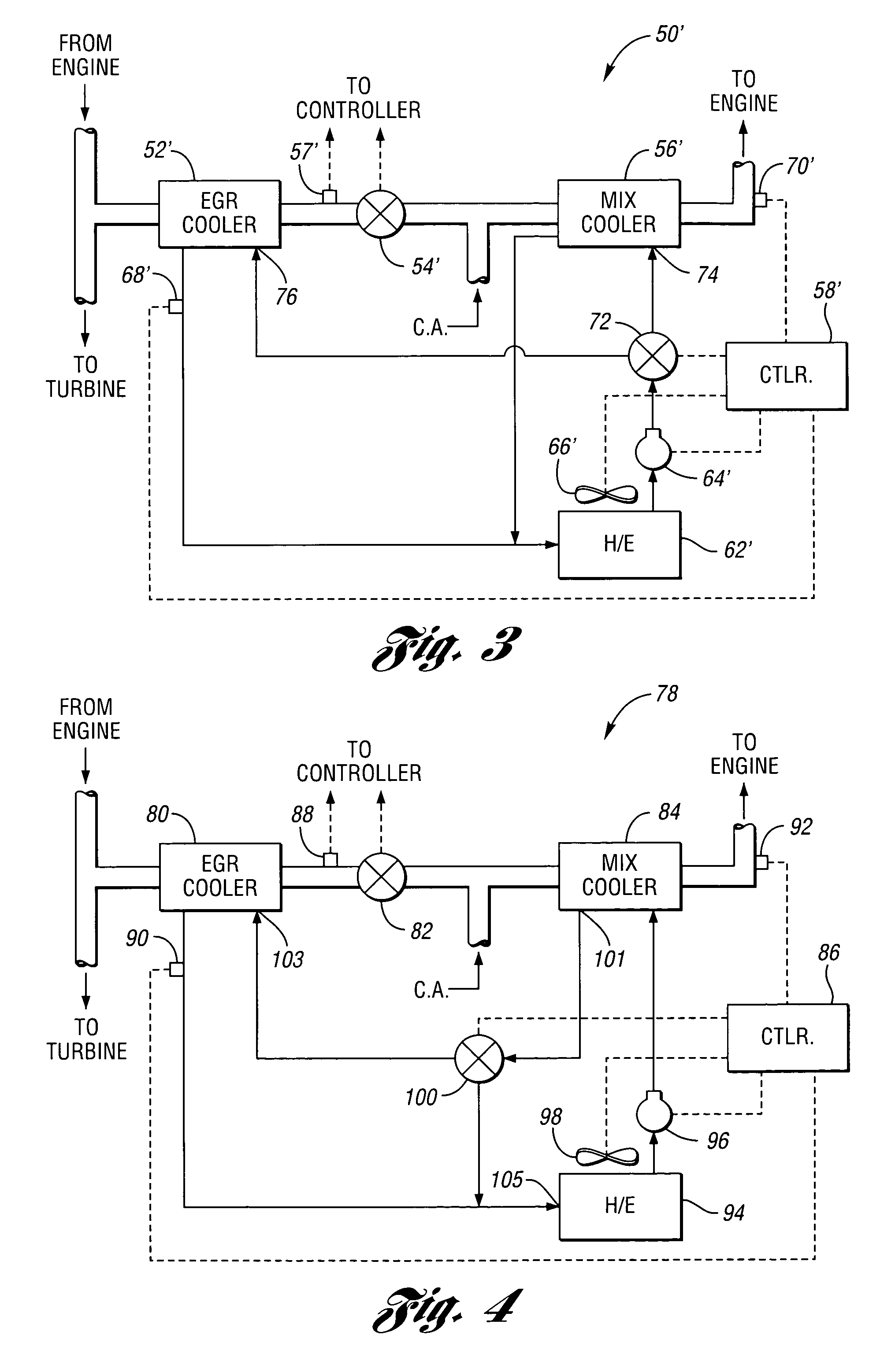Thermal management system for a vehicle
- Summary
- Abstract
- Description
- Claims
- Application Information
AI Technical Summary
Benefits of technology
Problems solved by technology
Method used
Image
Examples
Embodiment Construction
)
[0024]FIG. 1 shows a vehicle thermal management system 10 in accordance with the present invention. Also shown in FIG. 1 is a portion of a vehicle 12, including an engine 14. The thermal management system 10 includes an exhaust gas cooler, or EGR cooler 16. As explained more fully below, the EGR cooler 16 cools the exhaust gas before it is recirculated back into the engine 14. An EGR valve 18 is located downstream from the EGR cooler 16, and is operable to control the amount of exhaust gas passing through the EGR cooler 16. By placing the EGR valve 18 downstream from the EGR cooler 16, the exhaust gas is cooled when it reaches the EGR valve 18. This helps to avoid some of the deleterious effects that hot exhaust gas can have on a valve, thus helping to extend the life of the EGR valve 18.
[0025] Having the exhaust gas cooled prior to entering the EGR valve 18 also allows the use of a smaller valve. This is because the mass of the exhaust gas is greater after it has been cooled; wit...
PUM
 Login to View More
Login to View More Abstract
Description
Claims
Application Information
 Login to View More
Login to View More - R&D
- Intellectual Property
- Life Sciences
- Materials
- Tech Scout
- Unparalleled Data Quality
- Higher Quality Content
- 60% Fewer Hallucinations
Browse by: Latest US Patents, China's latest patents, Technical Efficacy Thesaurus, Application Domain, Technology Topic, Popular Technical Reports.
© 2025 PatSnap. All rights reserved.Legal|Privacy policy|Modern Slavery Act Transparency Statement|Sitemap|About US| Contact US: help@patsnap.com



